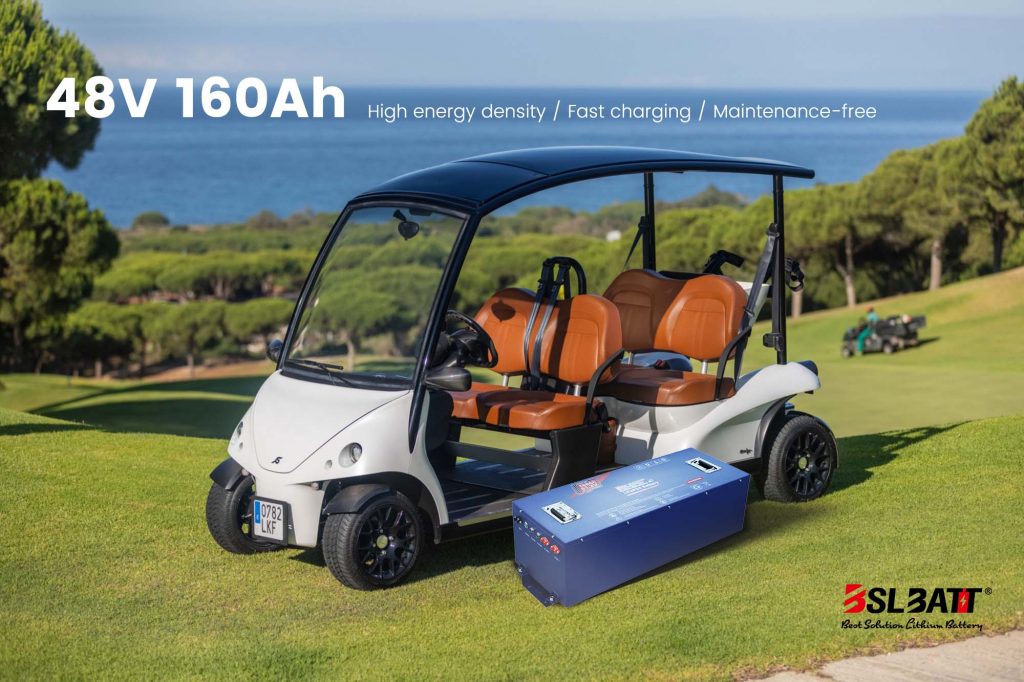
Recreational Vehicle Lithium Batteries
BSLBATT Recreational Vehicle Lithium Batteries are trusted and used in hundreds of RV’s around the world.
If you’re searching the worldwide market for the best Recreational Vehicle Lithium Batteries in the industry, we’re glad your here. Here are some of these reasons you might want to consider when upgrading to Lithium Batteries for your RV:
The downsides of Lead Acid Batteries
To understand why lithium batteries show such promise for replacement of lead batteries in motorhomes, it first helps to understand all the ways that traditional lead acid batteries fall short.
Limited Usable Capacity
It is typically considered wise to use just 30% – 50% of the rated capacity of typical lead acid batteries. This means that a 400 amp hour battery bank in practice only provides, at best, 200 amp hours of actual usable capacity. If you even occasionally drain the batteries more than this their life will be drastically cut short.
Limited Cycle Life
Lead acid batteries require special attention to avoid reducing their life by draining them too low or not fully charging them. Even if you are going easy on your batteries and are careful to never overly drain them, the best deep cycle lead acid batteries are typically only good for 300 cycles. If you are a full timer or take frequent extended trips this could mean that your batteries may need replacement in less than 2 years!
Slow & Inefficient Charging
Lead Acid batteries require multi stage chargers with complex algorithms to keep them from over heating or swelling. Not fully charging a lead battery leads to premature aging.
Placement Issues
Flooded lead acid batteries release toxic acidic gas while they are charging, and must be vented. They also must be stored upright, to avoid battery acid spills.
Peukert’s losses & Voltage Sag
A fully charged lead acid battery starts off around 12.8 volts, as it is drained the voltage drops steadily. When the voltage drops below 12 volts the battery has about 25% of its usable capacity remaining, Some RV inverters and electronics may fail to operate with less than a full 12 volt supply.
Also – the faster that you discharge a lead acid battery of any type, the less energy you can get out of it. This effect can be calculated by applying Peukert’s Law, and in practice this means that high current loads like an air conditioner, a microwave or an induction cooktop can result in a lead acid battery bank only producing less than 60% of its normal capacity. This is a huge loss in capacity when you need it most!
Size & Weight
Lead Acid Batteries are Big & very Heavy!!! A typical 8D sized battery that is commonly used for large RV’’s like the Trojan 8D-AGM weighs 167lbs, and provides just 230 amp-hours of total capacity – which leaves you with 115 amp hours truly usable, and only 70 for a high discharge applications.

Technological Advantages of Recreational Vehicle Lithium Batteries
A confluence of events is setting the stage for what may well be dramatic change in the battery industry that has not changed much in the past 40 years. Lithium Batteries are arriving at a good time, RV manufacturers are facing some difficult challenges with respect battery life in motorhomes, These challenges are driving the need for Lithium Batteries in RV’s that offer more flexibility when it comes to:
● Reduced Footprint & Weight allowing a more effective use of space
● Increased Battery Capacity
● Ability to Predict Failures
● Extended Life
● Eliminate Maintenance and Overhead
Lithium batteries provide multiple times the energy density as compared to Lead Acid Batteries. As a result Lithium batteries take up much less space than lead batteries that deliver the same power. Recreational Vehicle Lithium Batteries can also withstand a wider temperature range than lead batteries and are less sensitive to temperature fluctuations. Predicting end of life for lead batteries can be almost impossible and they can fail without warning. Lithium Batteries last for thousands of cycles so most coach owners may never know what it’s like to see a lithium battery die. For those who may cycle batteries everyday It could be over 10 years before Lithium batteries would show signs of reduced capacity project.
Lower Total Cost
Lithium ion batteries present considerable cost challenges when making an initial investment. They are usually more expensive, at first, than lead-acid solutions. However, in most situations, the faster degradation of lead-acid batteries means they need to be replaced after a relatively short duration. Lithium ion batteries, on the other hand, can withstand the rapid and deep cycling necessary in bridge-to-backup scenarios without problems, allowing them to last several times longer than lead-acid options in many applications.The long-term reliability of lithium ion batteries makes them a hardier energy storage option for bridge-to- backup solutions. This reduces the total cost of ownership of purchasing the solution. The end result is a situation in which you end up saving considerably over time even though you have to spend a bit more at the outset of the project.
Wasted Energy
In addition to all that wasted generator time, lead acid batteries suffer another efficiency issue – they waste as much as 25% of the energy put into them via inherent charging inefficiency. So if you provide 100 amps of power, you’ve only storing 75 amp hours.This can be especially frustrating when charging via solar, when you are trying to squeeze as much efficiency out of every amp as possible before the sun goes down or gets covered up by clouds.
Deep Discharge without consequences
The ability to rapidly discharge energy is great, but lead-acid battery life may be compromised when used this way. Available lead-acid battery capacity decreases as their discharge rate increases, and product life rapidly degrades when they are deeply discharged (i.e. more than 30-50%). This means the nameplate capacity of the batteries must be 2-3x greater than the level of desired performance. Lithium ion batteries are designed specifically to withstand deep depth of discharge (DOD) making them capable of lasting much longer over time without having to be replaced.
No Doubt, Lithium Ion Batteries are more expensive than Lead Acid Batteries, But upgrading to them assures better performance of your motor home. |































